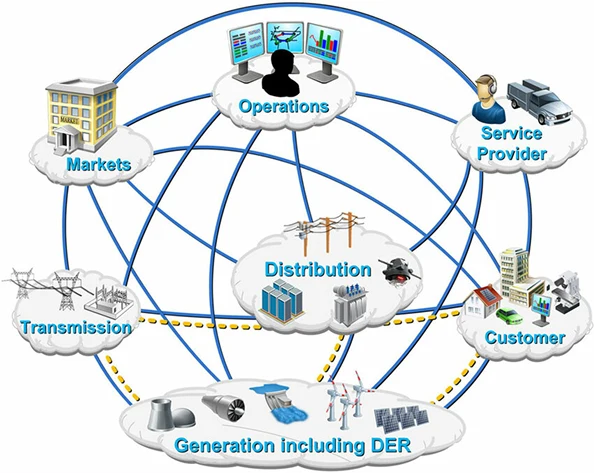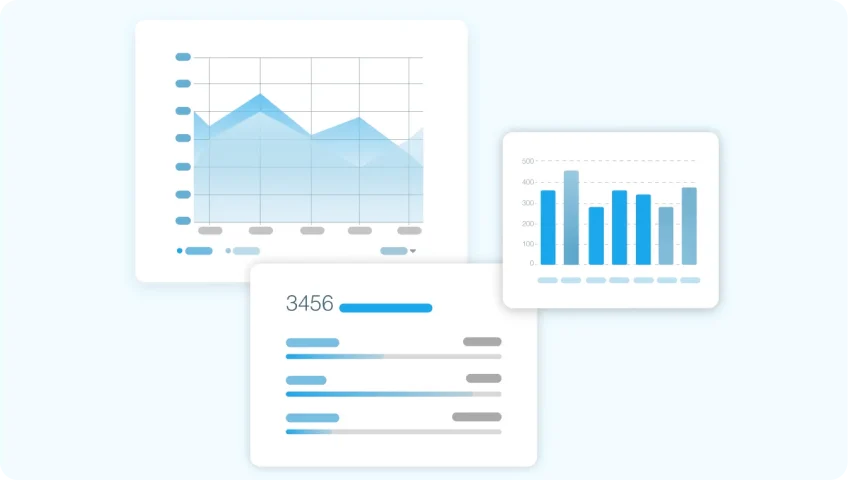45% Fewer Overloads
93% Forecast Accuracy
26% More Renewable Use
AI Powered Smart Grid Load Balancing & Consumption Forecasting
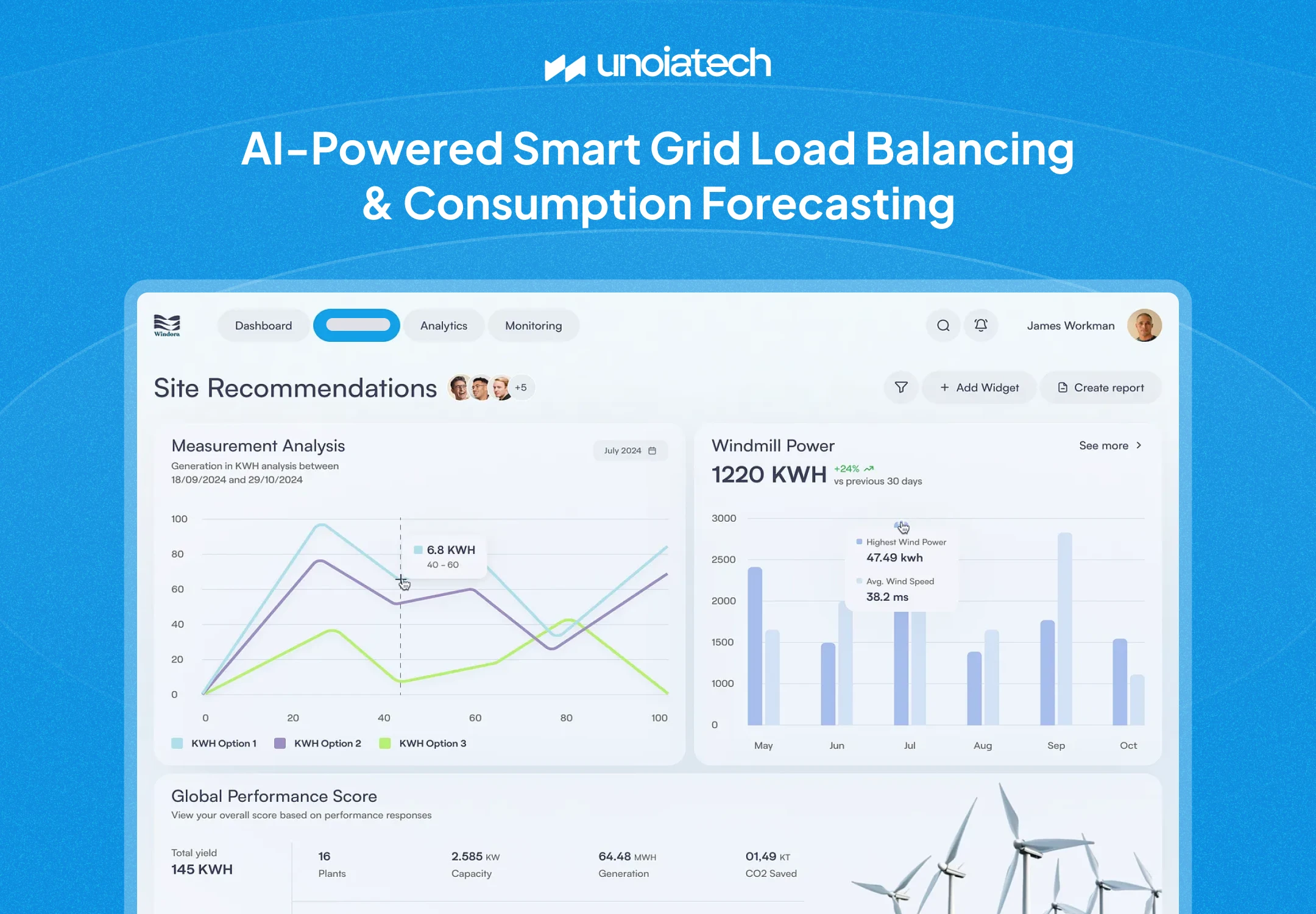
Client
State-Level Energy Provider
Features
AI Load Balancing
Demand Forecasting
Energy Optimization
Stats
Overview
To enhance energy distribution efficiency, reduce grid overloads, and optimize resource allocation, we developed an AI-powered Smart Grid Load Management Agent for a regional energy provider. This AI system automates real-time demand forecasting, dynamic load balancing, and consumption pattern analysis, allowing the utility company to make proactive adjustments in power distribution and better serve both commercial and residential customers.
Who is the Client?
Our client is a state-level energy company that supplies electricity to over 2 million customers, including homes, factories, and municipal infrastructure. They struggled with peak load management, unpredictable energy consumption, and manual resource allocation, especially during extreme weather and seasonal demand shifts.
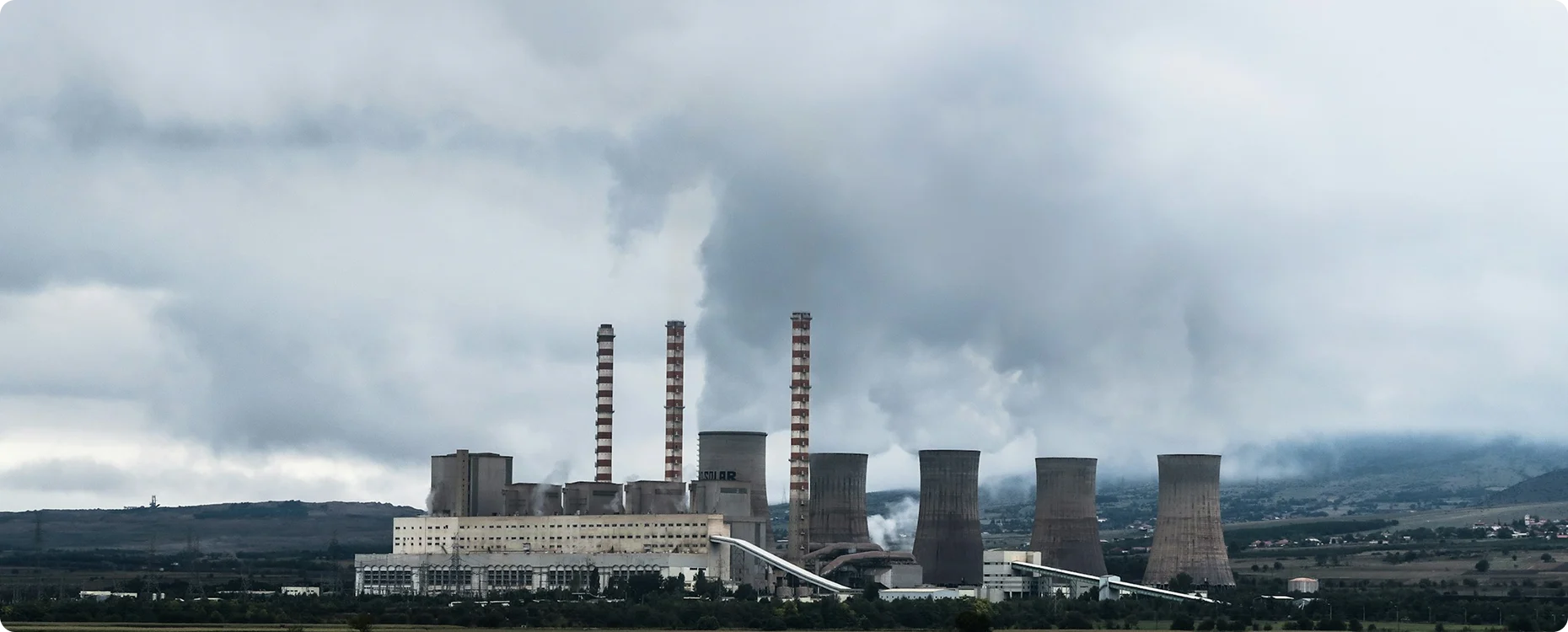
The Problem
1. Unpredictable Demand Spikes
- Energy usage fluctuated significantly during heatwaves, cold snaps, and industrial surges.
- The grid often came under pressure, leading to rolling blackouts or excess energy waste.
2. Inefficient Load Distribution
- Power distribution was largely based on historical averages and reactive measures.
- Some areas were consistently overloaded, while others had underutilized capacity.
3. No Real-Time Adjustments or Forecasting
- Decisions about energy production, rerouting, or storage were made hours or days later, based on reports.
- There was no system to dynamically adjust grid operations based on live usage.
4. High Operational & Maintenance Costs
- Overuse in high-demand zones led to frequent equipment strain and infrastructure wear.
- Reactive maintenance increased overall operating costs and risked system-wide outages.
5. Sustainability & Compliance Pressure
- The company was under regulatory pressure to optimize renewable energy usage, reduce emissions, and report efficiency improvements.
Solution
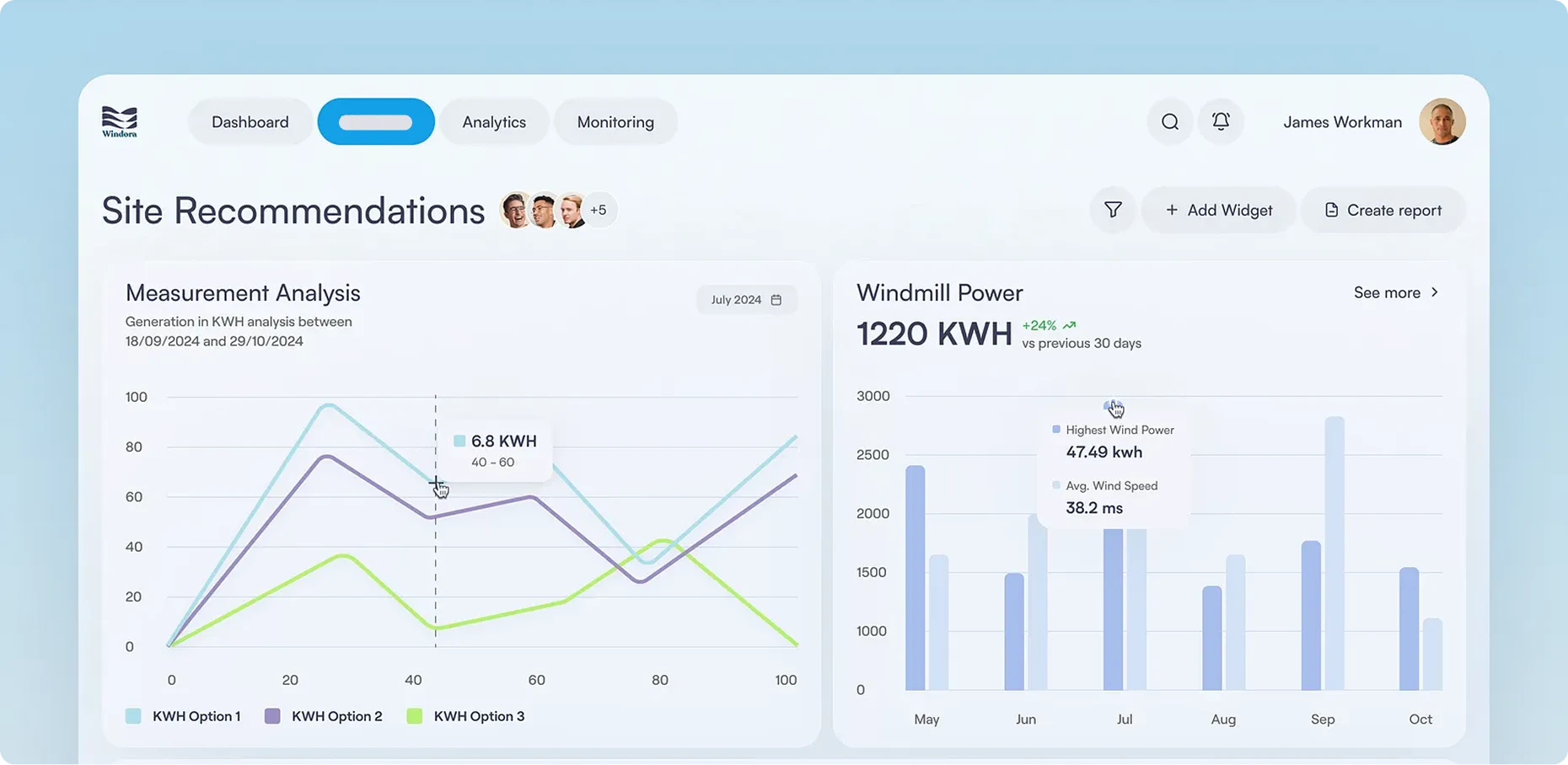
We developed and deployed an AI-powered Load Management and Forecasting Agent, capable of monitoring grid activity in real time, predicting usage patterns, and recommending or automatically initiating load balancing actions.
The AI-Powered Solution Included:
Real-Time Demand Forecasting
- AI models forecast power consumption by:- Analyzing historical usage, real-time sensor data, weather patterns- Factoring in local events, holidays, and industrial work schedules- Updating predictions every 5 minutes using live smart meter feeds

Dynamic Load Balancing Across the Grid
- AI adjusts power distribution in real time:- Identifies zones at risk of overload- Reroutes energy or activates backup sources like batteries or generators- Optimizes transformer utilization and feeder switching
Anomaly Detection & Fault Prediction
- AI flags sudden consumption spikes or drops that may indicate:- Equipment malfunction- Power theft or tampering- Hidden inefficiencies or system faults
Energy Storage Optimization
- Manages usage of battery storage and renewables:- AI decides when to store or release energy based on forecasted needs- Prioritizes use of solar, wind, and hydro power during surplus periods

Regulatory & Sustainability Reporting
- Automatically generates reports on:- Load balancing actions and efficiency improvements- Renewable energy usage and carbon offset trends- Grid health metrics and outage risk zones


The Process Followed
Step 1: Infrastructure Audit & Load Data Analysis
- Conducted a detailed review of the client’s substations, transformers, and smart meter networks
- Analyzed 5 years of energy usage data, weather patterns, and past blackout events
- Identified recurring failure points and load imbalances
Step 2: AI Model Development & Simulation Testing
- Developed machine learning models using:- Time-series forecasting- Reinforcement learning for real-time decision-making- Anomaly detection for fault prediction
- Simulated load balancing strategies using historical stress scenarios
Step 3: Agent Development & Grid System Integration
- Integrated the AI agent with:- SCADA (Supervisory Control and Data Acquisition) system- Smart meter API and real-time sensor feeds- Backup systems (battery banks, generators, load control relays)
Step 4: Pilot Testing & Validation
- Launched in 2 high-load urban zones for 3 months
- AI forecasts were validated against actual grid behavior and adjusted
- Fine-tuned thresholds for real-time balancing decisions
Step 5: Full-Scale Deployment & Monitoring Dashboard
- Rolled out the AI agent across the full network
- Implemented a live grid monitoring dashboard with:- Forecast accuracy- Load balancing efficiency- Environmental and financial impact reporting

Testimonial

“The AI agent transformed how we manage our grid. We’ve shifted from reactive fixes to predictive decision-making. Load balancing is now precise, efficient, and environmentally responsible. Our customers experience fewer outages, and our teams have better control than ever.”
Chief Grid Operations Officer
Regional Energy Provider
Business Impact & Results
1. Reduced Outages & Overloads
- Grid overloads dropped by 45%, especially in high-demand zones
- Prevented 3 major blackouts during summer surge periods
- AI activated battery backups 5x more efficiently than manual triggers
2. Better Forecasting & Load Prediction Accuracy
- AI forecasts achieved 93% accuracy for next-day and real-time demand predictions
- Improved planning for peak hour energy pricing and power procurement
3. Lower Operational Costs & Maintenance
- Avoided infrastructure strain led to 18% less equipment failure
- Reduced emergency maintenance dispatches by 30%
- Smarter usage of renewables and batteries lowered grid stress
4. Enhanced Sustainability & Compliance
- Enabled 26% more usage of renewable energy during peak periods
- Automated compliance reporting helped meet government audit benchmarks
- Set groundwork for future carbon tracking & smart demand-response programs
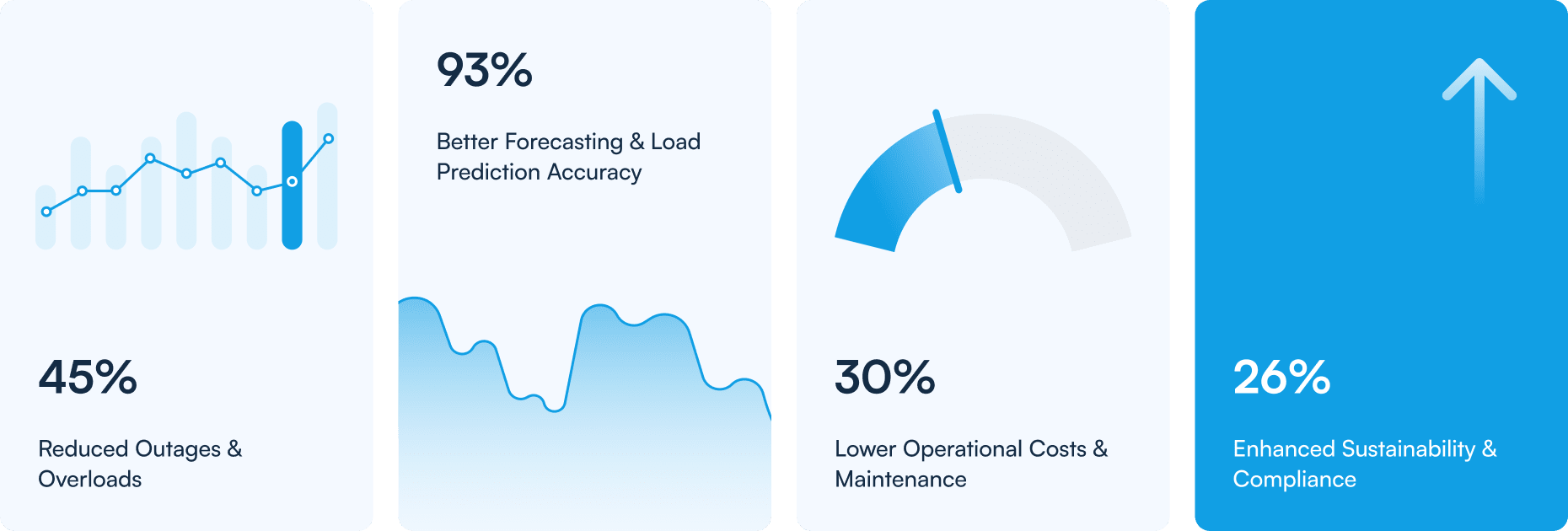
Conclusion
The AI-powered Smart Grid Load Management Agent is revolutionizing energy distribution by enabling real-time forecasting, proactive balancing, and sustainable energy use. Utility providers can now ensure uninterrupted service, reduce infrastructure strain, and pave the way for next-gen smart grids.
This case study serves as a blueprint for energy companies aiming to become more resilient, data-driven, and sustainable using AI-driven automation.
Call to Action

Grab the Opportunity,
Get Technical Advantage,
Build the Next Unicorn.
Unoiatech gives you the power to ideate, build and launch your Software Business so you can grab stake in the Emerging Tech Market.



